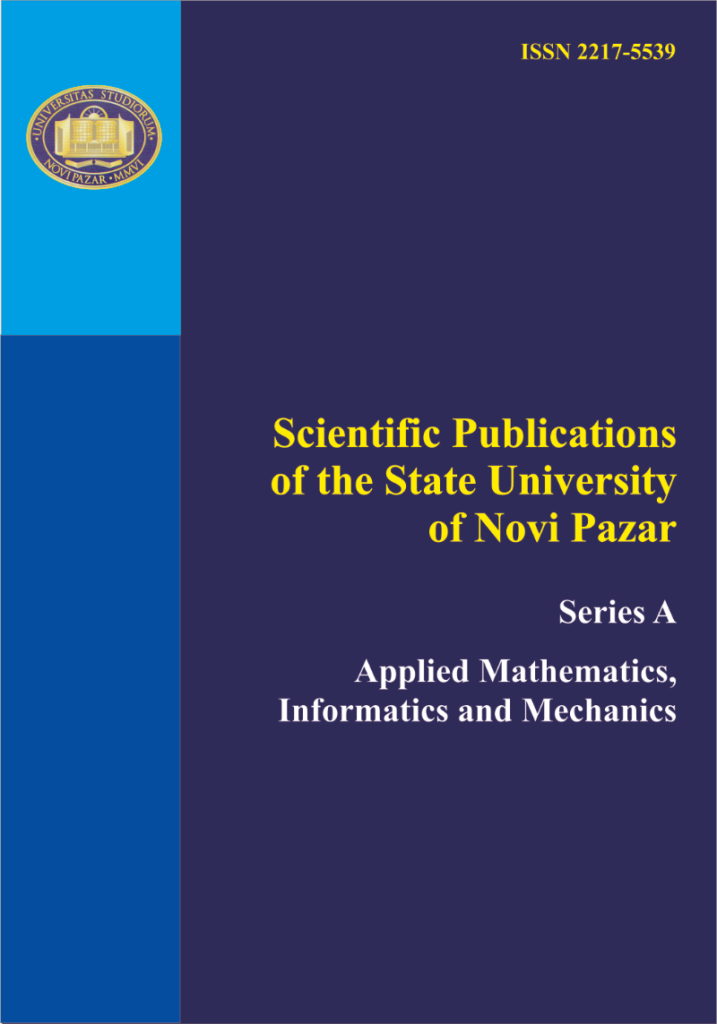
An approach to governance and policy making architectural framework
Authors: D. Randjelović, E. Kajan, Ć. Dolićanin
Keywords: clustering; e-governance; text similarity; Web 2.0 similarity; Web 2.0
Abstract:
This paper proposes a novel approach to facilitate and foster e-govemment optimization and automation through the use of advanced information retrieval methods and techniques, and advanced Web technologies, as well. The approach suggested in this work aims to enable interactive processes that are simple, effective, and based on the user’s needs and capabilities, rather than the government’s organizational structure or government business models. It should create the opportunity to evaluate and eliminate redundant or unnecessary steps and processes as well as to reduce costs and cycle times by transitioning from the processes mainly based on human-related work to automated and more intelligent processes.
References:
[1] Bessis, N., Asimakopoulou, E., Norrington, P., Thomas, S., Varaganti, R. (2011) A Next Generation Technology Victim Location and Low Level Assessment Framework for Occupational Disasters Caused by Natural Hazards. J. Space-Based and Situated Computing, 2(1): 43-53
[2] Bessis, N., Asimakopoulou, E., Xhafa, F. (2011) A next generation emerging technologies roadmap for enabling collective computational intelligence in disaster management. International Journal of Space-Based and Situated Computing, 1(1): 76
[3] Bouguettaya, A., Nepal, S., Sherchan, W., Zhou, X., Wu, J., Chen, S., Liu, D., Li, L., Wang, H., Liu, X. (2010) End-to-End Service Support for Mashups. IEEE Transactions on Services Computing, 3(3): 250-263
[4] Brabham, D.C. (2008) Crowdsourcing as a Model for Problem Solving: An Introduction and Cases. Convergence: the International Journal of Research into New Media Technologies, 14(1): 75-90
[5] Charalabidis, Y. (2012) ICT for governance and policy modeling: Research challenges and future prospects in Europe. u: 45th Hawaii International Conference on System Sciences, Hawaii, Proceedings, 2472-2481
[6] di Lorenzo, G., Hacid, H., Paik, H., Benatallah, B. (2009) Data integration in mashups. ACM SIGMOD Record, 38(1): 59
[7] Howe, J. (2006) The rise of crowdsourcing. Wired, vol. 14
[8] Jasmeen, K., Vishal, G. (2010) Effective Approaches for Extraction of Keywords. International Journal of Computer Science Issues, 7(6): 144-148
[9] Kajan, E. (2010) Interoperability issues of business processes: Key issues and technological drivers. u: Lee I. [ur.] Encyclopedia of e-business development and management in the global economy, Hershey, PA: IGI Global, 908-917
[10] Kajan, E., i dr. (2012) Normalization of text documents in Serbian language for efficient searching in E-Government systems. u: ETRAN International Conference, Zlatibor, Proceedings, in Serbian, 1-4
[11] Kajan, E., Dorloff, F.D., Bedini, L. (2012) Handbook of research on e-business standards and protocols: Data and advanced web technologies. Hershey: IGI Global
[12] Kajan, K.E., i dr. (2013) Social approach to design business processes. Hershey, PA: IGI Global, submitted for publication
[13] Layne, K., Lee, J. (2001) Developing fully functional E-government: A four stage model. Government Information Quarterly, 18(2): 122-136
[14] Lee, I. (2011) Overview of Emerging Web 2.0-Based Business Models and Web 2.0 Applications in Businesses. International Journal of E-Business Research, 7(4): 1-16
[15] Marovac, U., Kajan, E., Shimic, G. (2012) A solution of semantic clustering of text documents. u: Proceedings of CPMMI International Conference, Novi Pazar, Book of Abstracts
[16] Matsuo, Y., Ishizuka, M. (2004) Keyword extraction from a single document using word co-occurrence statistical information. International Journal on Artificial Intelligence Tools, 13(01): 157-169
[17] Ndou, V. (2004) E-Government for democratic countries: Opportunities and challenges. Electronic Journal of Information Systems in Developing Countries, vol. 18, 1-24
[18] OECD (2003) The e-Government Imperative. u: e-Government Studies
[19] Ranđelović, D., Bajagić, M., Carević, B. (2012) Internet as a function of terrorism. u: International Conference Internet as a function of terrorism, crime prevention and European integration with emphasis on Cyber crime, Banja Luka, Proceedings, 317-330
[20] Ranđelović, M., Ranđelović, D., Suknović, M. (2011) An approach to intelligent web-based multi-attribute decision support system. u: 19. Telfor International Conference, Belgrade, Proceedings, 1514-1518
[21] Rao, K., Dey, S. (2011) Decision Support for E-Governance: A Text Mining Approach. International Journal of Managing Information Technology, 3(3): 73-91
[22] Rogsatidius, J., i dr. (2011) Towards real-time emergency response using crowd supported analysis of social media. u: CHI 2011 International Conference, Vancouver, Proceedings
[23] Shimic, G., i dr. (2011) An approach to document clustering using hybrid method. u: IADIS e-Society Conference, Berlin, Proceedings, 153-159
[24] Vleweg, S., i dr. (2010) Microblogging during two natural hazards events: What twitter may contribute to situational awareness. u: Proc. of CHI 2010, Atlanta, 1079-1088
[25] Wartena, C., Brussee, R. Topic Detection by Clustering Keywords. u: Proceedings of Proc. of DEXA’08 International Conference, 54-58
[26] West, D.M. (2004) E-Government and the Transformation of Service Delivery and Citizen Attitudes. Public Administration Review, 64(1): 15-27
[27] Wu, H.C., Luk, R.W.P., Wong, K.F., Kwok, K.L. (2008) Interpreting TF-IDF term weights as making relevance decisions. ACM Transactions on Information Systems, 26(3): 1-37
[28] Yu, J., Benatallah, B., Casati, F., Daniel, F. (2008) Understanding Mashup Development. IEEE Internet Computing, 12(5): 44-52